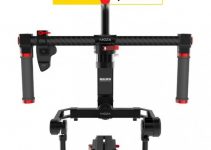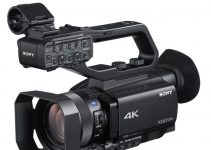DaVinci Resolve is hands down one of the best pieces of software if you want to do some intense color grading for film and video.
It has so many well-developed tools that make the job much, much easier, and one of the best is the advanced tracking. This is essential for precise color grading and automated tracking can save so much time as you edit.
Again, Alex Jordan from Learn Color Grading is here to show us all a collection of tips and tricks for getting more out of the tracking features in Resolve. He claims these are going to make your life so much easier.
Going over the basics, Jordan does explain that tracking in Resolve is amazing already. Drop on a window, adjust the sizing, and then hit tracking and you are set with a wonderfully tracked window. Sometimes it doesn’t work quite as nicely as we would hope. That’s where these tricks come into play.
1. Accounting for Parallax
With a moving camera you will occasionally get very obvious parallax. This is when the subject(s) in the foreground appear to be moving at a different speed than the subject(s) in the background. It’s a common effect. However, Resolve doesn’t quite understand this and will track the different objects as they shift position, resulting in your window getting a little skewed. Resolve doesn’t know better.
![]()
The first trick is to make the window very small, essentially only covering the subjects in the background (or foreground). This way the tracking doesn’t get confused by trying to track multiple objects. The problem here is that you now have a tiny window.
This leads to the second trick, which is to head down to the tracking controls and set it to Clip.
This allows you to make all the sizing adjustments you want while still maintaining the tracking you did earlier using the smaller window. You can even move it anywhere you want and it’ll still maintain the original tracking.
2. Interactive Mode
Say you don’t want to mess with doing multiple things in a row and want to get everything done using a single properly sized window. That is when you might see an advantage in using Interactive Mode. This mode allows you to delete tracking points.
![]()
Place you window and hit Interactive mode. You should see some tracking points show up on your clip now. If you see that it is going to track multiple subjects you can go and select the points you don’t want Resolve to track and then hit the subtract points button to make them disappear.
3. Point Tracker
For more control over what gets tracked, you will want to head to the Tracker settings and in the bottom right change from Cloud Tracker to Point Tracker. Cloud is the default and automatically finds a bunch of points to track.
Point lets you manually place a single point to track. Once you go and add a point just hit forward and it’ll track based on that one point. This can be very helpful in controlling trackers in busy scenes.
![]()
4. Matching Tracking
Imagine you already put the work in tracking a subject in your scene and you don’t want to waste time getting it all set up again, yet you still need another window to get the job done. That is when this trick can help.
![]()
Make your second window and then head to the “…” at the top right of the tracker settings. This gives you the selections for copying and pasting the track data. Just copy from your master track and paste it onto your new window. It’s as simple as that.
5. Don’t Use Automated Tracking for Simple Scenes
The final tip is how to do tracking without actually using Resolve’s automated settings. If it is a very simple movement and the subject isn’t moving all that much it could be a much better choice. What you want to do is make the window and head to the Frame settings instead of Clip.
Then you can position the window in the scene and the Tracker will save all the settings at that particular frame. Then you can move to another frame and make adjustments again.
It’s basically just making keyframes as you make adjustments. Then it’ll just smoothly move between your keyframes.
![]()
This is actually some amazing stuff for getting to understand the tracker settings way better. Even if you use some tracker settings reliably I’m sure there is something in here that is useful and well worth a watch.
[source: Learn Color Grading]
Disclaimer: As an Amazon Associate partner and participant in B&H and Adorama Affiliate programmes, we earn a small comission from each purchase made through the affiliate links listed above at no additional cost to you.
Claim your copy of DAVINCI RESOLVE - SIMPLIFIED COURSE. Get Instant Access!





